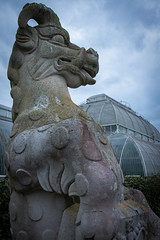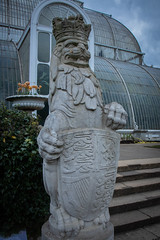Shoreditch is an area of London located just to the East of the City (the financial area of London). It has been over the year’s home to many immigrant populations – in the late 19th and early 20th century’s it was home to East London’s Jewish population, many of whom have now moved away from the area, to be replaced by a large Bengali population. However, recently, it has become more gentrified, and has a rather bohemian feel to the area.
My main reason for visiting the area was, if I must admit, to get freshly made Bagels from the Beigel Bakery in Brick Lane:
This still is a very popular destination, despite the Jewish community moving away from the area. Actually the Beigels were a bonus. The real reason for this visit was to capture the ever-changing urban backdrop to this area.
Graffiti has been allowed to flourish here. Not the boring tagging you see as your travel on the trains heading into London, but proper art work. I recently learnt, that some of the works are by artists who have trained at the Royal Academy. Quite remarkable really, but for people like me, most of the work is by anonymous gifted artists. I have found out the name of one artist recently, thanks to a comment on my flickr stream:
This is called ‘Grizzled’ by the artist Jimmy C. This picture reminds me of the work of Maximilien Luce and uses the pointillism technique that Luce used in the early 20th centaury.
The artwork is constantly changing, and any piece of blank wall is considered a free canvas. Businesses have also joined in, some with humorous results. For example, I couldn’t help but smile when I saw this:
The owners obviously have a fantastic sense of humour, calling their Fish and Chip shop “Codfellas”.
Some have also appeared to commission work to help advertise their businesses.
This is used to advertise a local restaurant.
However most of the artwork on display is for non-commercial gain:
I was taken back, on how detailed some to the paintings are. For example this one of a ship, which has been painted on a wall in a car park:
It appears to be signed Deus Venica 2011 – but I cannot find any information anywhere about the artist.
I took many more pictures on this walk around Shoreditch, and you can see them all here.
The graffiti itself is well worth a visit to this area of London, and I will be returning again in the future to look for new work. However, I was surprised to see the number of independent shops and restaurants that are dotted around the area, which are well worth a visit in their own right. Despite saying that, I was very happy as I made my way back home clutching a bag of hot freshly baked beigels – some of which never actually made it home – mmmmmmmm!!!!!!












